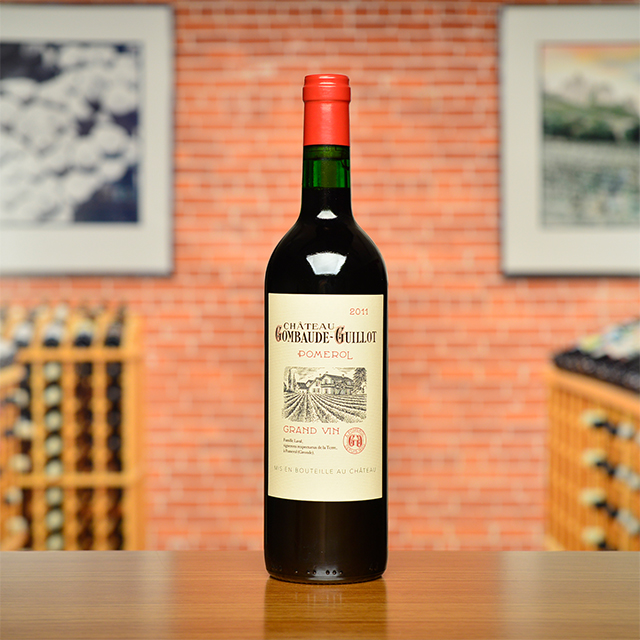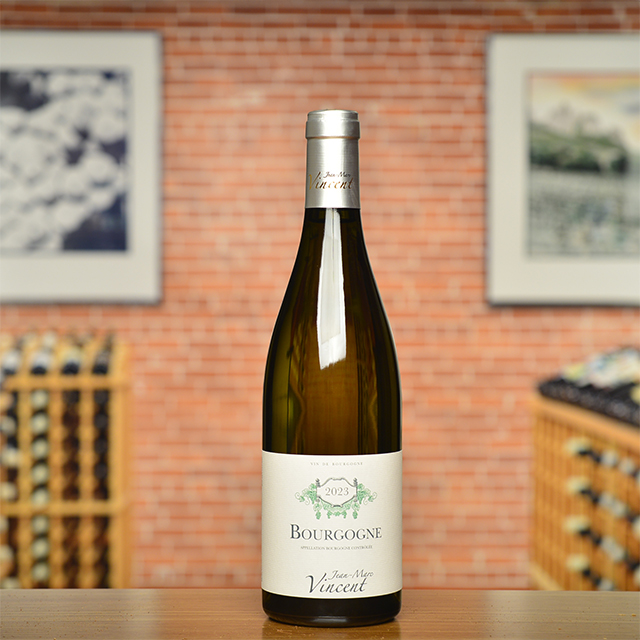Notify me
2016 Pomerol
Château Gombaude-Guillot
I don’t know if it’s the 2016 vintage—considered one of Bordeaux’s greatest of the last decade—or if this wine is in a particularly prime place, but it’s the best bottle of Gombaude-Guillot I’ve ever tasted. This stunning red is so fine I can make out a variety of spices on the nose, like milled white pepper, nutmeg, and clove. The blend is largely Merlot with just a hint of Cabernet Franc, but the latter seems to dominate; I smell stone slabs and ripe bell pepper. En bouche, this wine tastes like a bouquet of violets, a suggestion I only presume to know because I’ve tried those chalky Choward’s candies. But now I imagine that violets taste like Pomerol, which is a much more appealing prospect.
—Jane Augustine
| Wine Type: | red |
| Vintage: | 2016 |
| Bottle Size: | 750mL |
| Blend: | 85% Merlot, 15% Cabernet Franc |
| Appellation: | Pomerol |
| Country: | France |
| Region: | Bordeaux |
| Producer: | Château Gombaude-Guillot |
| Winemaker: | Claire Laval |
| Vineyard: | 40 years, 7 ha |
| Soil: | Flint, Clay |
| Aging: | Wine is aged in Allier oak barrels, 50% of which are new, although the proportion of new oak varies according to the vintage |
| Farming: | Organic (certified) |
| Alcohol: | 14% |
More from this Producer or Region

2011 Pomerol MAGNUM
France | Bordeaux
With incredible depth, power, and fine but grippingly youthful tannins, this is unmistakably Pomerol.

2017 Pomerol
France | Bordeaux
The incredible depth, power, and fine but grippingly youthful tannins are text-book Pomerol

2019 Pomerol
France | Bordeaux
The incredible depth, power, and fine but grippingly youthful tannins are text-book Pomerol.

2011 Pomerol
France | Bordeaux
Rich, velvety texture and vivid fruit, suggesting blackberry and plum with an almost wild intensity.

2023 Sauternes HALF BOTTLE
France | Bordeaux
It is a habit-forming apéritif with or without foie gras.

2022 Bordeaux Sec “Les Clous”
France | Bordeaux
A nervy, age-worthy wine; it smells remarkably like top-notch Chablis, but on the palate hints at cool and tropical fruits like melon, lychee, and lime.

2020 Sauternes
France | Bordeaux
This is truly artisanal Sauternes—made by hardworking farmers who are willing to sacrifice quantity for excellence.

2006 Pomerol
France | Bordeaux
It makes a grandiose impression on the palate, rich and broad with sensuous depth and a long, luscious finish.

2020 Bordeaux Sec “Les Clous”
France | Bordeaux
It has the nerve and precision of the Définition cuvée along with additional weight and structure.

2011 Canon-Fronsac
France | Bordeaux
At thirteen years old, its brambly berry notes are but a memory of its youth. They have evolved and taken on a woodsier sophistication of shady underbrush, violet, and nutmeg.
About The Producer
Château Gombaude-Guillot
About The Region
Bordeaux

Often considered the wine capital of the world, Bordeaux and its wines have captured the minds, hearts, and wallets of wine drinkers for centuries. For many, the wines provide an inalienable benchmark against which all other wines are measured.
Bordeaux is divided into three winegrowing regions with the city that gives the region its name in the near geographical center. The “right bank,” or the area located east of the Dordogne River, produces wines that are predominantly Merlot with small amounts of Cabernet Franc and Cabernet Sauvignon. The “left bank” is located to the west of the Garonne River and produces wines dominated by Cabernet Sauvignon, with Cabernet Franc, Merlot, Malbec and Petit Verdot.
The third region, Entre-Deux-Mers, lies between both rivers and produces white wines from Sauvignon Blanc, Sémillon, and Muscadelle. Though technically in the left bank, it is worth noting the appellation of Sauternes, which produces arguably the world’s most famous sweet wines from Sauvignon Blanc, Sémillon, and Muscadelle as well.
Though many top Bordeaux wines are sold en primeur (in advance of their bottling) and often through a middleman known as a negoçiant, Kermit has always preferred to purchase directly from the winemaker. For more than three decades he has sought out small producers, who make classic Bordeaux wines and are willing to play outside the negoçiant system. This ethic has led to longstanding relationships, excellent prices, and perhaps most important—wines of great value and longevity.
More from Bordeaux or France
2022 Bordeaux Sec “Les Clous”
Domaine de l’Alliance France | Bordeaux
2023 Sauternes HALF BOTTLE
Château Roûmieu-Lacoste France | Bordeaux
2021 Bordeaux Sec “Les Clous”
Domaine de l'Alliance France | Bordeaux
2011 Pomerol MAGNUM
Château Gombaude-Guillot France | Bordeaux
2024 Graves Blanc HALF BOTTLE
Château Graville-Lacoste France | Bordeaux
2006 Pomerol
Château Gombaude-Guillot France | Bordeaux
2001 Fronsac MAGNUM
Château Haut-Lariveau France | Bordeaux
2020 Bordeaux Sec “Les Clous”
Domaine de l’Alliance France | Bordeaux
2011 Pomerol
Château Gombaude-Guillot France | Bordeaux
2020 Atlantique Blanc “Déclinaison”
Domaine de l’Alliance France | Bordeaux
2024 Graves Blanc
Château Graville-Lacoste France | Bordeaux
2017 Pomerol
Château Gombaude-Guillot France | Bordeaux
2022 Bordeaux Sec “Les Clous”
Domaine de l’Alliance France | Bordeaux
2023 Sauternes HALF BOTTLE
Château Roûmieu-Lacoste France | Bordeaux
2021 Bordeaux Sec “Les Clous”
Domaine de l'Alliance France | Bordeaux
2011 Pomerol MAGNUM
Château Gombaude-Guillot France | Bordeaux
2024 Graves Blanc HALF BOTTLE
Château Graville-Lacoste France | Bordeaux
2006 Pomerol
Château Gombaude-Guillot France | Bordeaux
2001 Fronsac MAGNUM
Château Haut-Lariveau France | Bordeaux
2020 Bordeaux Sec “Les Clous”
Domaine de l’Alliance France | Bordeaux
2011 Pomerol
Château Gombaude-Guillot France | Bordeaux
2020 Atlantique Blanc “Déclinaison”
Domaine de l’Alliance France | Bordeaux
2024 Graves Blanc
Château Graville-Lacoste France | Bordeaux
2017 Pomerol
Château Gombaude-Guillot France | Bordeaux
Kermit once said...

Kermit once said...
If you're looking for value, look where no one else is looking.
Inspiring Thirst, page 211

















